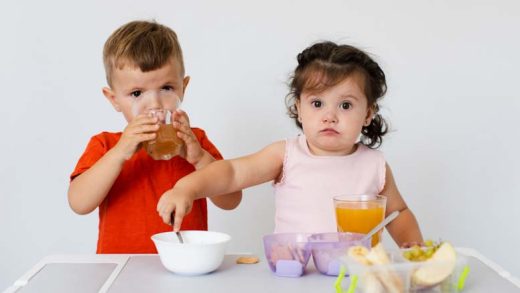When you were a toddler, your perspective of the world and behaviour was different from what it is now as grown-ups. This changes everything including your actions, reactions, and day-to-day responses. As we grow up, we pass through several developmental stages. Each developmental stage has its typical behaviour.
As a parent, you need to understand and address these behavioural changes in your kids at each stage. It can help you to give the right support and create a supportive atmosphere. This promotes the healthy development of your kid. In this blog, we will explore in detail child behaviours by age and typical behaviour in children.
Understanding Typical Behaviour
Typical behaviour refers to the normal activities children exhibit. This includes their emotions and developmental milestones throughout their development. Understanding these patterns is important for parents. It allows them to provide appropriate help and create a nurturing atmosphere.
The changes include physical, cognitive, emotional, and social adjustments. They follow predictable patterns. This enables parents to determine if a child is developing at a normal pace. It becomes important to recognize the developmental stages of your child. Here are some reasons:
- Understand what behaviours are common at a certain age. It allows parents to set realistic expectations. This knowledge can help cut unnecessary concerns about their child’s development.
- Recognizing typical behaviour enables parents to use appropriate parenting practices. This promotes their child’s development and manages any issues that arise.
- Being mindful of developmental milestones allows parents to detect any deviations early. This helps in taking swift action and support as needed.
Typical Baby Behaviour (Infants: 0-12 Months)
During their first year, infants achieve plenty of physical and cognitive milestones. Infants experience considerable physical changes. It ranges from gaining head control and pushing up during tummy time to sitting independently and taking their first steps. Children progress from focusing on faces to imitating gestures. They also try doing simple motions such as waving.
Infants start smiling, cooing, and making eye contact, advancing to laughing and identifying familiar faces. They convey their needs by crying. They express delight and discomfort and seek comfort from their parents.
Typical Toddler Behaviour (Toddlers: 1-3 Years)
Toddlers are curious about their surroundings. They pick up new skills, such as how to walk, share information, and express themselves. Toddlers are curious, active, and even stubborn. When they do not like something, they can even throw tantrums.
Toddlers like playing and interacting with others. But, they also crave independence and can opt to do things on their own. They develop their personalities and preferences as they grow. Thus, acknowledging and encouraging toddlers’ curiosity helps. Establishing clear limits helps parents help them thrive.
Typical Preschoolers Behaviour (Toddlers: 3-4 Years)
Preschoolers have boundless energy and imagination. They like playing with other children and sharing toys and stories. They learn how to take turns and collaborate. Preschoolers are becoming more self-sufficient. They seek to help with simple household duties.
They may become irritated or throw tantrums when things don’t go their way. Yet, they are beginning to understand their feelings and express themselves. Preschoolers thrive in secure and supportive environments. We encourage them to be creative and acknowledge their accomplishments. Allowing your kid to make basic choices can help them gain more independence. To let them perform suitable tasks on their own also contributes to this.
Typical School-Age Behavior
When kids reach school age, they have a strong desire for independence in decision-making about schooling. Yet, they still seek parental guidance in managing emotions and social relationships.
During this period, they begin to make friends and explore new interests. They develop their unique personalities. They intimidate their classmates’ behaviours. Kids also acknowledge cultural and interpersonal differences.
At this age, kids can also challenge boundaries and engage in lying or deceiving conduct. Parents should address the atypical behaviours. It includes trouble in making friends, frequent aggression without provocation, or disengagement. Some children may dislike school, or struggle to concentrate. They may also face chronic challenges in achieving academic or social development. Here, parents should seek professional help.
Typical Pre-Adolescent and Adolescent Behavior
Preadolescence and adolescence begin when children reach the ages of 9 and 18. During this time, they express their desire for independence. Constant indulgence of parents can make them irritable. They like to test boundaries, seek privacy, and make decisions with organic implications.
Sometimes kids face challenges in keeping friendships or issues in attending school. It shows deeper issues such as cognitive problems or focus problems. This becomes more obvious when academic expectations increase.
Unusual behaviours may include difficulties with self-care, communication, or academic achievement that falls well below expectations. Check signs of mental health problems, such as changes in eating or sleeping patterns. Many mental health illnesses develop throughout adolescence.
Coping with Atypical Behaviour
When dealing with unusual behaviour in children, parents have to be patient. You need to be empathetic, and proactive. Here’s how you can handle this challenging area:
- Recognition:
- Professional Help:
- Supportive Environment:
Observe deviations from expected milestones and signs of underlying problems. It includes developmental delays and odd social interactions. Extreme reactivity, sensory stimuli, or communication and self-management challenges can also be signs.
If you see indicators of abnormal behaviour in your kid, get help from a healthcare expert. The indicators include frequent distractibility or unprovoked aggression. Paediatricians, child psychologists, and developmental experts can provide essential insights. They can help in effectively addressing these problems.
Creating a supportive and controlled atmosphere at home can help here. Consistent routines and clear expectations help. The use of positive reinforcement can help to encourage positive behaviour.
In conclusion, certain behaviours are usual at some ages but uncommon at others. Make sure you take your child’s age into account while attempting to decide whether their behaviour is something to worry about. At Kangaroo Kids International Preschool, we promote children’s autonomy and emotional well-being. We also focus on creating a secure atmosphere for children to grow. To learn more, contact us right now!









